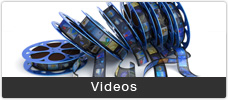Case Studies
Chapman University - Dodge College of Film and Media Arts (Orange, California, USA) | EIZO
Before EIZO, Chapman University Dodge College of Film and Media Arts had 12-15 color correction and finishing suites in operation, each with a dedicated monitor for grading and color accurate reference display. They used broadcast plasma displays that had to be calibrated individually on a regular basis, using third party probes and expensive calibration software. The process was labor intensive and time consuming, usually taking an hour to complete a calibration on just one display. With one person on staff qualified to perform calibrations it was nearly impossible to keep the entire facility always in check. It was also disruptive to ongoing film projects having to take systems offline in the middle of the day to calibrate.

The biggest appeal of EIZO was the self-calibration and networked display functionality of the ColorEdge series. Being able to schedule and manage all display calibration via the ColorNavigator Network for their entire facility was huge both in terms of time savings and overall consistency in the quality of the images their students create. They are now able to set calibration targets and measure results without ever leaving the engineering office, and we can schedule calibration on a regular basis to take place late at night when systems are not already in use.

The other appeal of EIZO was the new 4K display in the ColorEdge series. Since replacing the HD plasmas in their color and finishing suites with 4K EIZO displays Chapman University also updated their finishing workflow to fully support 4K mastering. Students are now able to take advantage of the larger resolutions they already acquire in production (4K-8K) by editing, coloring and finishing on 4K displays. Students are now able to consistently view and monitor the content they are creating on high-resolution and highly-color-accurate displays on-set during production all the way through post-production and delivery. EIZO has made the technical challenge of producing high-quality, color accurate imagery so much easier that it allows their students to focus on what matters most: creative storytelling.










